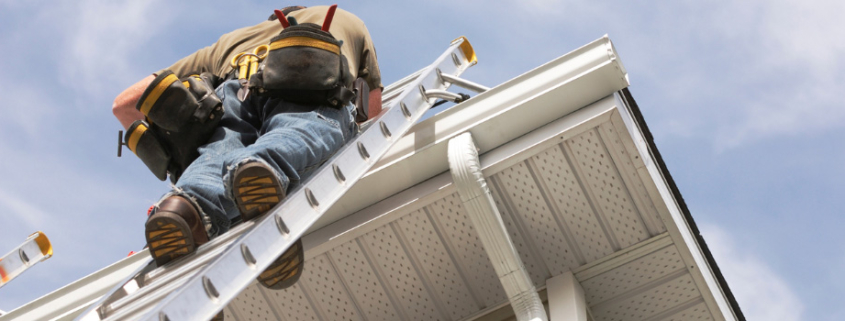Climbing to new heights: Observing Ladder Safety Month
As we step into Ladder Safety Month, it’s crucial to use ladders properly to prevent accidents at home and work. Although ladders are common tools that enable us to reach greater heights, ladder-related accidents in the U.S. result in losses of $24 billion annually.
Whether you’re a DIY enthusiast working on home projects or a professional tradesperson, ensuring ladder safety should always be a top priority. Understanding the different types of ladders and main causes of accidents, as well as following some basic safety tips can help prevent you from becoming a statistic.
Some of the most commonly-used types of ladders include:
- Stepladders which have an A-frame design and spreaders that lock each side in the correct position.
- Extension ladders which have a base and one or two upper sections that slide up and down to allow you to reach different heights.
- Multi-position ladders, also known as combination ladders or articulating ladders, give you extra versatility because they have multiple hinges that can be folded or adjusted into different shapes.
- Attic ladders which help you access unused areas for additional storage space. Most fold, but scissor and sliding varieties are also available.
The four main causes of ladder accidents are:
- Choosing the wrong ladder type.
- Using worn or damaged ladders.
- Using a ladder incorrectly.
- Positioning a ladder incorrectly.
Following these simple safety tips will help keep you and others safe while using ladders:
Choose the right ladder.
With any project, selecting the right tools can make the difference between having a project proceed as planned or running into issues along the way. The same is true for choosing a ladder. Things to consider include:
- Height
- Load capacity
- Ladder material (e.g., wood, metal, etc.)
Select the proper placement.
Before setting and climbing up a ladder, inspect your surroundings. Ensure the ladder is:
- On level ground
- Not in front of an unsecured door
- Out of the way of heavy foot traffic
- Able to be fully opened and locked
Also, be sure there are no overhead power lines.
Follow the angle rule.
This tip is a little technical and applies to extension ladders. Simply put, for every four feet of ladder height the base of the ladder should be one foot away from the resting surface.
Pay attention while ascending or descending.
Being in a rush or preoccupied can lead to injury. The most common accident occurs when the last step is missed while climbing down.
Maintain three points of contact while ascending or descending.
Two hands and a foot or two feet and a hand should be in contact with the ladder at all times while climbing.
Don’t overreach.
Overreaching is the second most common accident that causes injuries. Always take calculated movements and keep your stomach between the ladder rails.
Use ladder accessories.
Using a tool belt keeps your hands free for climbing and balance. Other accessories can improve ladder stability.
Educate others.
If you see a friend, family member, or coworker using a ladder incorrectly, tell them. Education goes a long way in preventing injuries on the job or in the home.
Article provided by West Bend Insurance.







Leave a Reply
Want to join the discussion?Feel free to contribute!